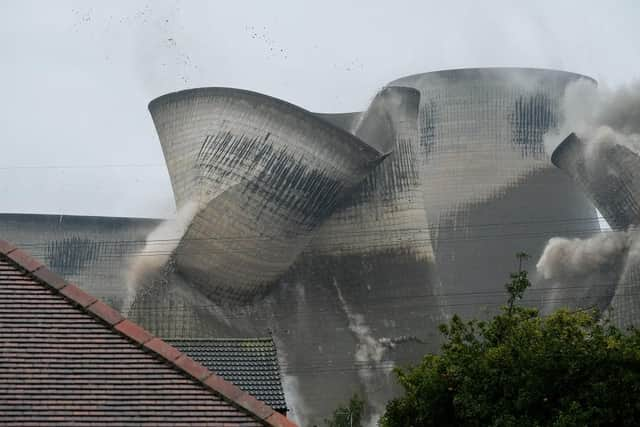Ferrybridge Power Station: The history of Yorkshire’s iconic coal-fired power source that dates back to 1917
For more than 50 years, the power plant has been a staple of West Yorkshire and during its heyday it employed more than 900 people.
It became an unconventional tourist attraction in the 1980s when it was opened to the public, causing major traffic congestion on the A1.
Advertisement
Hide AdAdvertisement
Hide AdThe Conservative government announced plans to privatise the electricity industry in 1988 and the station's owner was announced as PowerGen plc.


However, rising costs meant that it had to close down in 2016. The demolition began in 2018 and more demolitions continued a year later which saw thousands of people gathering at the scene to watch it all unfold.
Further demolition of the power plant occurred on August 22, 2021. Homes were evacuated, roads were closed and planes and drones were prohibited from flying over while the demolition takes place.
The last of the demolition will take place on the evening of March 17, 2022, however, there is no expectation that residents will need to leave their homes this time.
Here is everything you need to know about its history.
Foundation of Ferrybridge
Advertisement
Hide AdAdvertisement
Hide AdThe acreage at Ferrybridge was bought in 1917 by the Yorkshire Electric Power Company and plans for a power station were discussed and submitted a year later.
But due to a system change in 1919, plans for the structure were paused and resubmitted the following year. The construction process for Ferrybridge A power station started in 1926 and it was up and running in 1927. The initial design covered 32 acres of its land.
The building consisted of the boilers, turbines, offices, and a smaller building which accommodated the electrical switchgear. It incorporated transport facilities due to its size which included a short track connected to the Dearne Valley line with the capacity for handling wagons up to 20 tonnes.
The power source equipment consisted of eight 75,000 pound (34,000kg) per hour water boiling capacity water tube boilers structured in pairs. The purpose of the boilers was to produce superheated steam at 371C.
Advertisement
Hide AdAdvertisement
Hide AdDespite station A being closed in October 1976, due to a change of ownership, Ferrybridge A’s boiler room and turbine hall still remain standing today and are used as offices and workshops.
Introduction of Ferrybridge B and C
In 1955 Ferrybridge B was constructed and it generated electricity using three 100 megawatt (MW) generating sets commissioned between 1957 and 1959.
Initially, the station had a total generating capacity of 300 MW but this dropped down to 285 MW by the 1990s forcing it to close down in 1992 and has since been completely demolished.
Around 11 years after the construction of Ferrybridge B, Ferrybridge C was opened with a generating capacity of two gigawatts by Central Electricity Generating Board.
It was closed down by March 2016.
Advertisement
Hide AdAdvertisement
Hide AdIn July 2019, one of Ferrybridge’s cooling towers was demolished and four more were demolished just three months later, leaving just three of the original eight towers standing three years on after its closure.
Comment Guidelines
National World encourages reader discussion on our stories. User feedback, insights and back-and-forth exchanges add a rich layer of context to reporting. Please review our Community Guidelines before commenting.